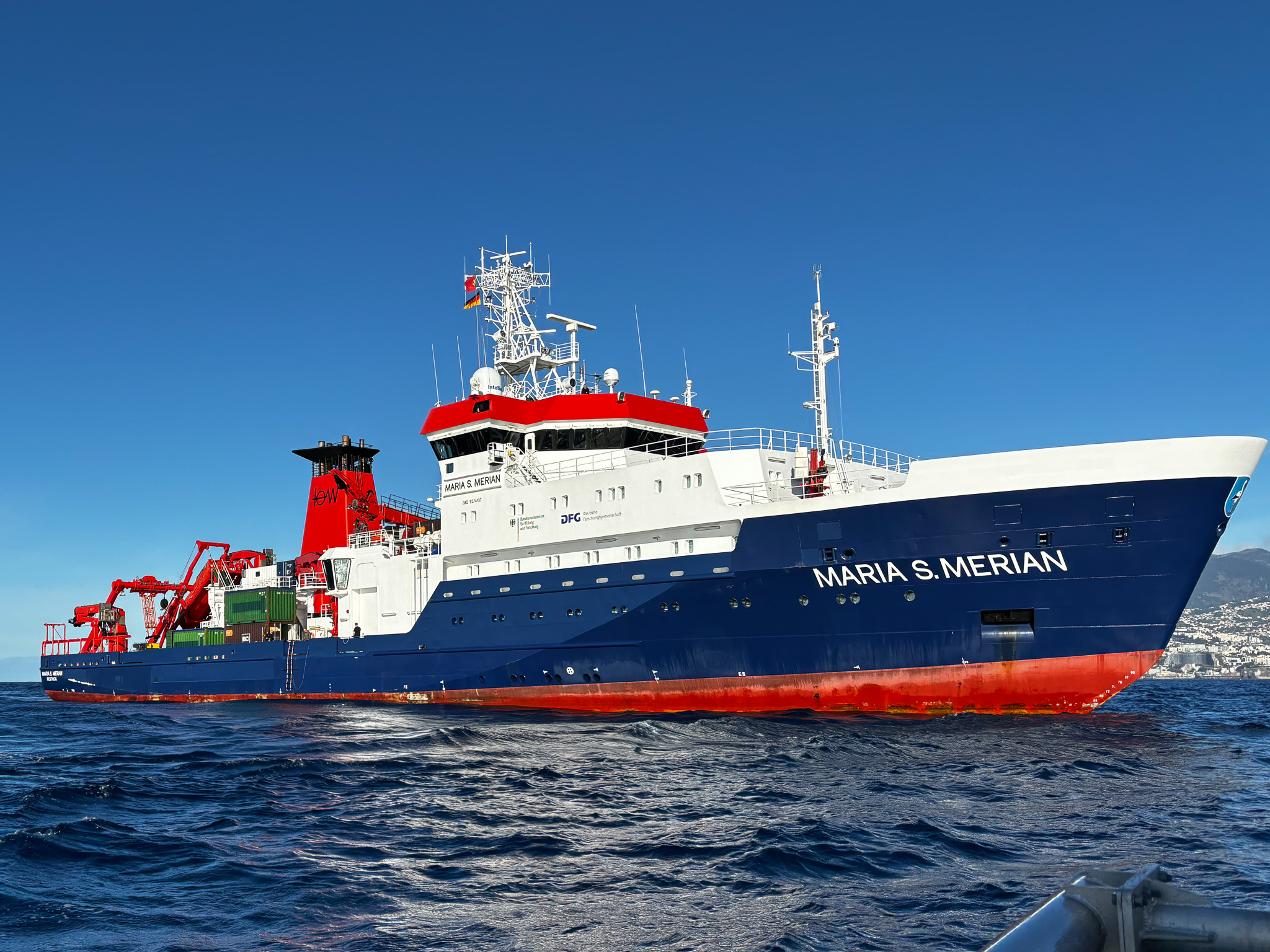by Isabell Schlangen Welcome back to our Ocean Science Blog! Today, we’re delving into the fascinating world of carbon and nitrogen cycling in the Bay of Bengal, and how these processes are intimately connected in shaping the biogeochemistry of this region, particularly within the oxygen minimum zone. Almost two weeks after leaving Colombo, we’ve become […]
Die Erste Forschungfahrt
von Albert Firus und Laurenz van Bonn (GEOMAR) Während die F/S SONNE die ersten Messstationen rund um den Äquator hinter sich lässt und weiter hineinfährt in den Golf der Bengalen, haben Techniker*innen, Wissenschaftler*innen und Crew an Bord alle Hände voll zu tun. Während das für die einen schon fast Alltag ist, wie zum Beispiel für […]
Our First Research Expedition
By Albert Firus and Laurenz van Bonn (GEOMAR) As the SONNE leaves the first measurement station around the equator behind and continues further into the Bay of Bengal, technicians, scientists, and crew on board are quite busy. While for some this is almost routine, such as our technician Mario, who is on his 36th cruise already, […]
The World of Atmospheric Aerosols
by Dr. Arun Babu Suja Greetings from the high seas by the TROPOS scientific team! Our mission during the BIOCAT-IIOE2 cruise is to delve into the fascinating world of atmospheric aerosols – those tiny particles suspended in the air – and unlock their secrets. These tiny particles suspended in the air hold immense significance in […]
At the beginning there was bureaucracy
Last year in summer I finished my Master’s degree. I was, and still am, very much in love with science, and enjoyed my research-focussed program a lot. No surprise that I wanted to pursue a scientific career, and that I was very happy I had managed to secure a PhD position as the next step […]
Welcome Aboard SO305: BIOCAT-IIOE 2
On 9 April 2024, 39 scientists from esteemed institutions such as the University of Hamburg, GEOMAR Helmholtz Centre for Ocean Research Kiel (GEOMAR), Helmholtz Centre hereon, University of Southern Denmark (SDU), and Leibniz Institute for Tropospheric Research (TROPOS) embarked on the research vessel Sonne for the BIOCAT-IIOE 2 (SO305) research expedition. The team comprises experts […]
Tentakel aus der Tiefe – die Cephalopodenfauna rund um Madeira
In den letzten Blogeinträgen haben wir gruselig aussehende Tiefseefische, gallertartige Schönheiten und faszinierende mikroskopische Organismen gezeigt. Eine weitere häufige Organismengruppe, die wir während MSM126 gefangen haben und die bisher nicht im Rampenlicht stand, sind die Kopffüßer (Cephalopoden). Cephalopoden sind Weichtiere – wie Schnecken oder Muscheln – und gehören zu den Meeresbewohnern, die oft eine hohe […]
Tentacles from the deep – The cephalopod fauna off Madeira
The last blog posts showed you scary-looking deep-sea fishes, gelatinous beauties and mesmerizing microscopic organisms. Another frequent organism group we captured during MSM126 which did not enjoy a spotlight so far are the cephalopods. Cephalopods are molluscs – like snails or mussels – and are marine inhabitants which often occupy high trophic positions in food […]
Dr Heidarzadeh’s interview with CNN on the 2nd April 2024 Taiwan earthquake (M7.4) and tsunami
For latest information regarding the 2nd April 2024 Taiwan M7.4 earthquake and tsunami, see Dr Heidarzadeh’s interview with CNN below.
Auge um Auge, Zahl um Zahl – das verborgene Wirken der Datenmanagerin
Die bisherigen Blogeinträge haben die atemberaubende und wunderschöne Arbeit der JellyWeb-Expedition gezeigt: Wir haben über farbenfrohe Kreaturen, hochmoderne Technologien und mutige Physiker allein unter Biolog:innen berichtet. Ja, unsere Projekte auf der Expedition MSM126 sind sehr vielfältig, und neben ihrer aufregenden Natur haben sie noch eine weitere Gemeinsamkeit: Sie alle produzieren tonnenweise Daten. Daten, die verwaltet […]



